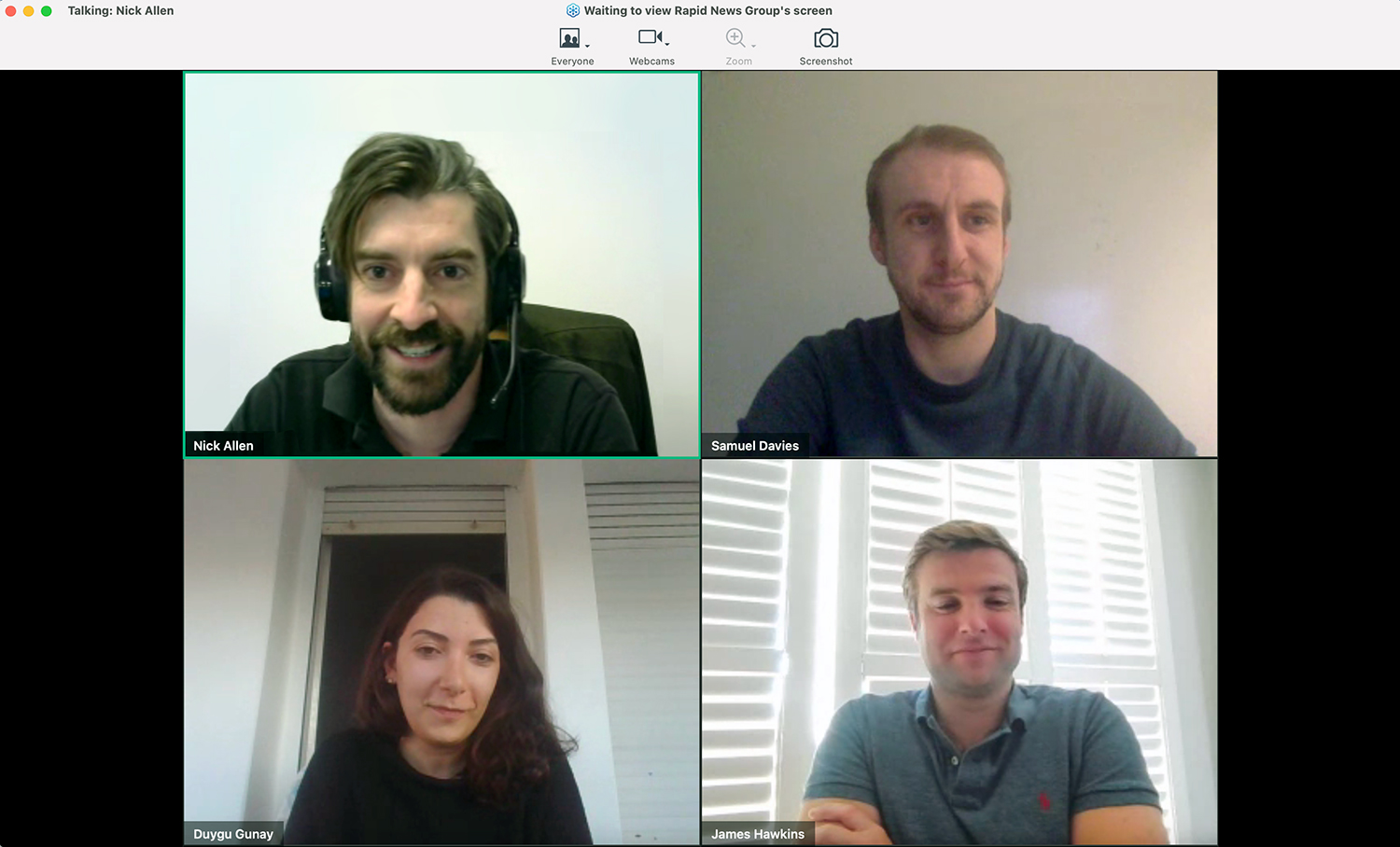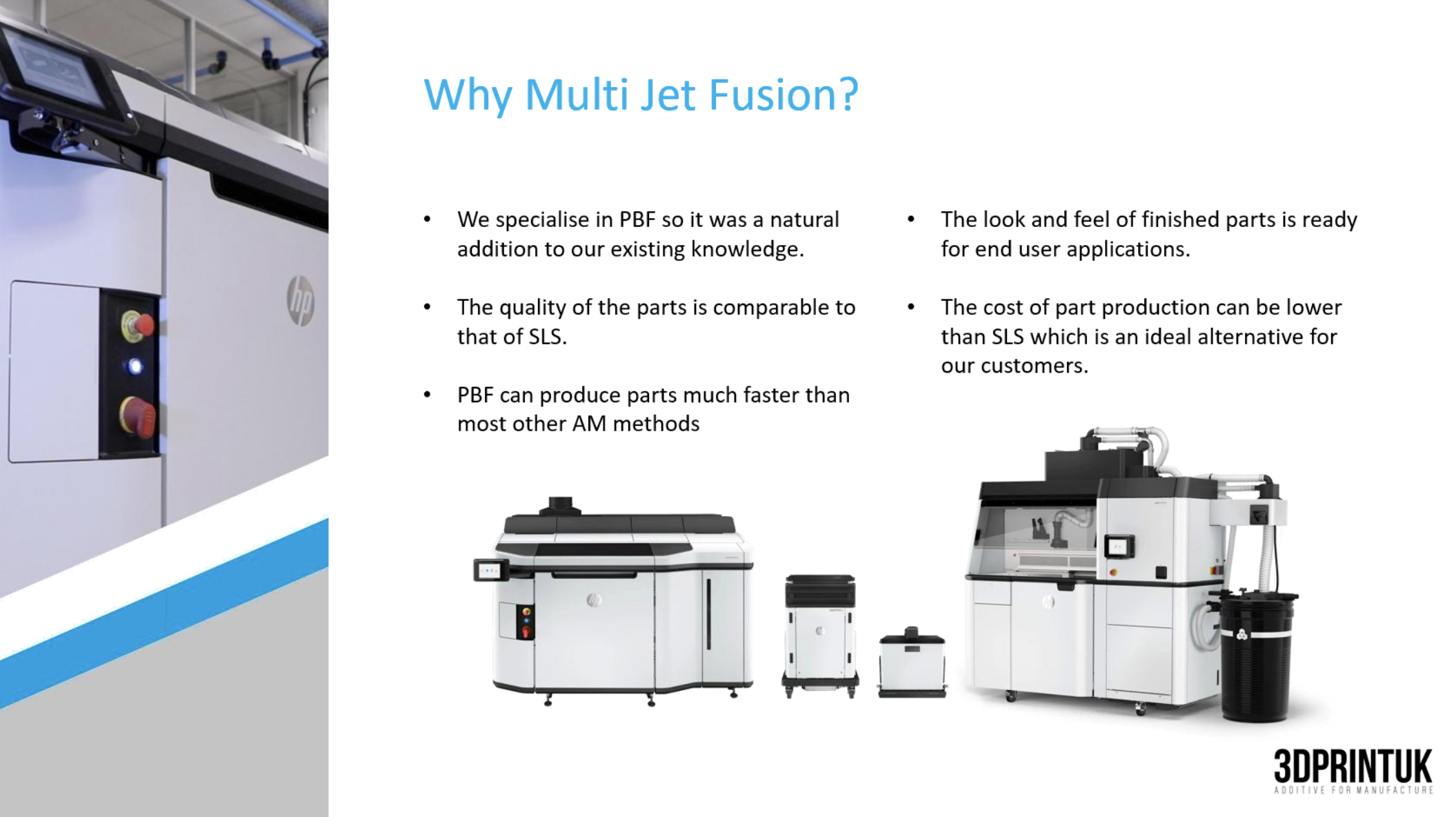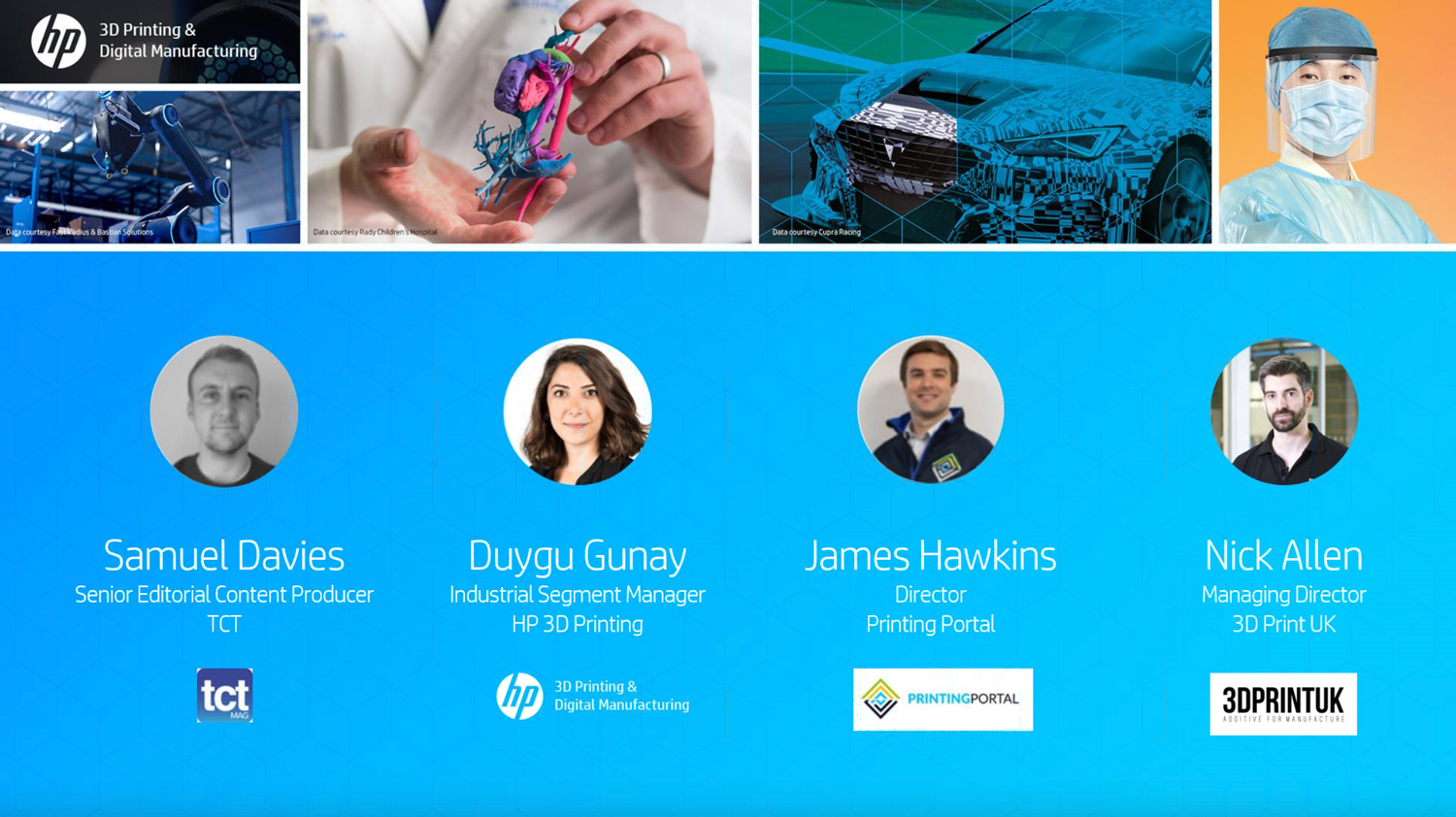Our MD, Nick Allen, recently took part in a webinar organised by HP and hosted by TCT Magazine. The webinar delivered some really great insight into the benefits of HP’s Multi Jet Fusion (MJF) 3D printing technology, specifically directed at the machinery and automation industry. In real terms, though, many of these benefits are equally applicable to other industrial sectors.

The five key considerations of 3D printing that the webinar addressed were: design for additive manufacturing (DfAM); material selection; process, production and productivity; post-processing; and sustainability.
The first four are especially important for successful outcomes with 3D printing, while sustainability is vital in terms of the individual and collective approach to the world we live in. There’s nowhere to hide on this last point — we all have a responsibility to contribute and we have some ideas on that, which will follow in a separate post.
That said, the starting point for this post has to be where — and IF — 3D printing is appropriate for any given application, and how it fits into the manufacturing landscape in general. At 3DPRINTUK we are vocal and consistent in this regard. Nick reiterated this view during the webinar, highlighting that 3D printing is not always the right solution for production applications when compared with traditional processes such as injection moulding.
For some years we (and the broader media) have talked about the “sweet-spot” for 3D printing. This has been with particular reference to using 3D printing processes for production applications. Today, however, the sweet-spot is a much broader landing strip than it has ever been before, and will only continue to get broader as processes, materials and automated post-processing capabilities continue to improve and make the economics of 3D printing for production more attractive.
Bridging the Gap
Nick did a great job explaining how plastic powder bed fusion (PBF) 3D printing can bridge the gap to injection moulding processes in particular, specifically when it comes to volumes. 10 years ago, 3D printing could only compete up to the 100s. Now we are into the 10s of thousands territory. Most notably batch production is a great fit for multi-jet fusion (MJF), offering the benefits of producing what you need when you need it thereby completely eliminating tooling costs and greatly reducing the costs & logistics associated with holding stock. Other benefits include much faster lead times and greater supply chain resilience. Nick’s other valid point on this was the consideration of part size: “if you can hold it in your hand (or smaller) it’s generally a good fit for 3D printing.” Larger parts generally increase cost, although there are off-set advantages for large, hollow parts.
Moreover, the range of different 3D printing processes available is also an important consideration. Obviously, as it was an HP webinar, the focus was on the MJF process, which is fair enough. MJF is a plastic PBF process, PBF being a process that 3DPRINTUK has specialized in for over a decade. As Nick pointed out, the company’s expertise with selective laser sintering (SLS) PBF is what naturally led 3DPRINTUK to invest in two of HP’s largest 3D printing systems. We know how good they are, and the value for money that they offer.

Indeed, with these two machines, we are apparently the second largest MJF service provider in the UK. Add in the SLS machines, and our PBF capacity is second to none in the UK. However, it remains important not to lose sight of other processes and understanding that they are not all the same. Nick also alluded to this, recognizing that as a specialist in plastic PBF technology, 3DPRINTUK is not trying to be all things to all people. And despite claims made by vendors, Nick — who along with the team, works with MJF & SLS every day — was able to point out that both technologies are comparable, with each pipping the other in a couple of areas.
Design — for AM and for Sustainability
Freedom of design has been leveraged as a benefit of 3D printing since the earliest days of the technology set. That remains true today as 3D printing processes allow design engineers to build functionality into their products and parts. This is especially true for PBF. Nick presented a case study from Komodo Simulations to highlight this point, which focused on a helicopter control system for flight simulation purposes. This application beautifully demonstrates the ability to design and produce complex curved parts with textured surfaces that improve the grip (and therefore the performance) of the part. This was enabled by the high surface detail that MJF affords. In addition, the internal components of this part could be produced hollow — reducing material consumption, and, critically, weight. For product development, manufacturing and the life-cycle of the product, these factors can contribute significantly to sustainability goals.
There was also a nod in this particular application to part consolidation, reducing the number of component parts through the design process leading to a reduction in production costs and increased ease of assembly. However, Nick caveated this by sharing how the argument for part consolidation with 3D printing can be over-simplified and over-used sometimes, pointing out that for some shapes (flat) and tolerances (fine) more successful outcomes are achieved by printing the parts separately and assembling them.
Post-processing
During the webinar Nick was able to qualify the importance of post-processing for any PBF 3D printed applications. Essentially there are two different stages of post-processing that follow 3D printing with powdered material — the essential steps required to get the parts looking like parts and the optional steps that can add different properties or aesthetics to the parts. As you might expect, powder removal is an absolutely essential, non-negotiable post-processing step followed by careful cleaning. Once the parts are recognizable, however, there are a number of finishing options that can be considered including colouring & smoothing. With the automated DyeMansion solutions we use, it is possible to achieve consistent finishes that many customers require. But as Nick pointed out — these post-processing steps are invariably the hidden costs of 3D printing and important to understand.

We think Nick’s contribution to the webinar provided some really insightful and timely advice, but why not check out the full webinar for yourself.
